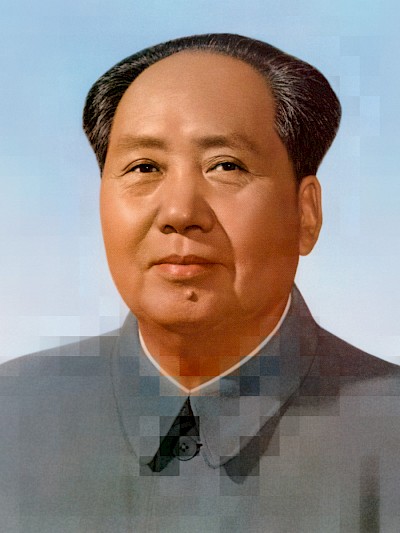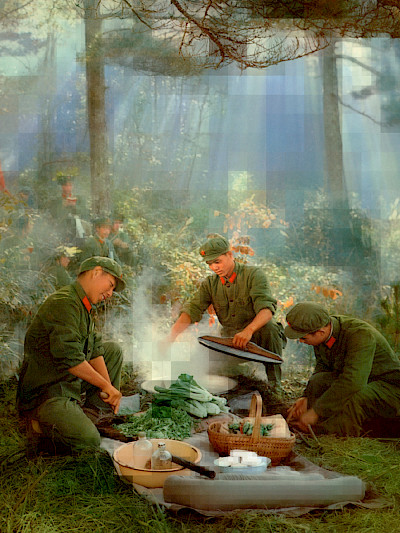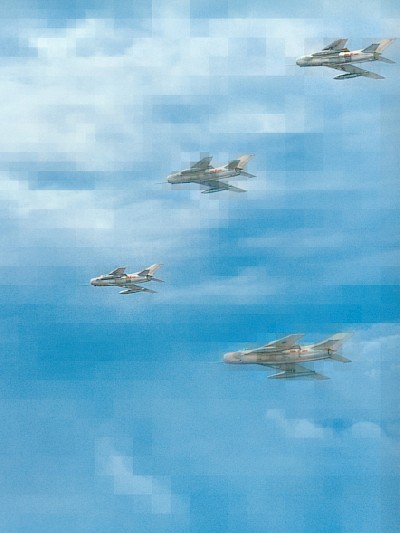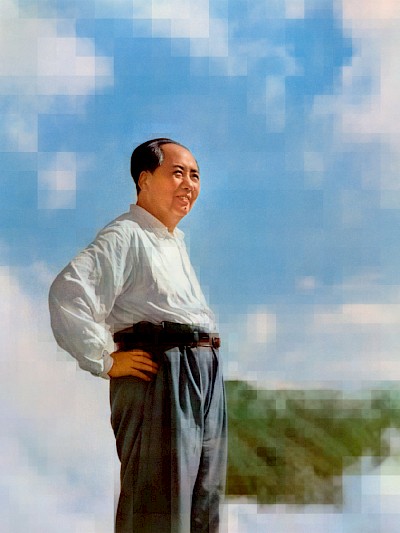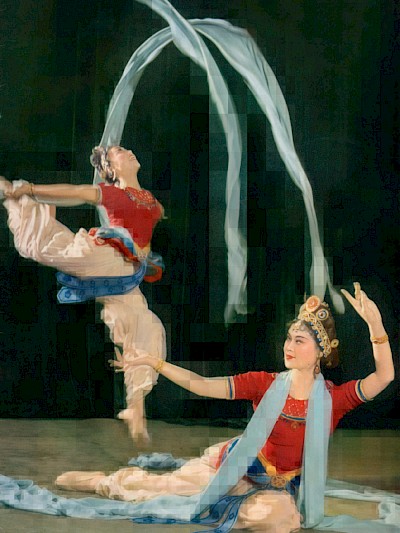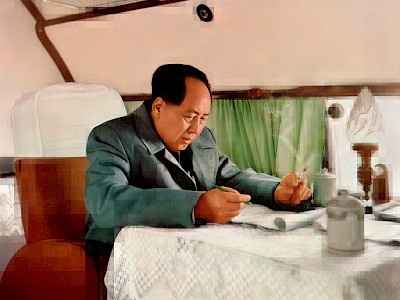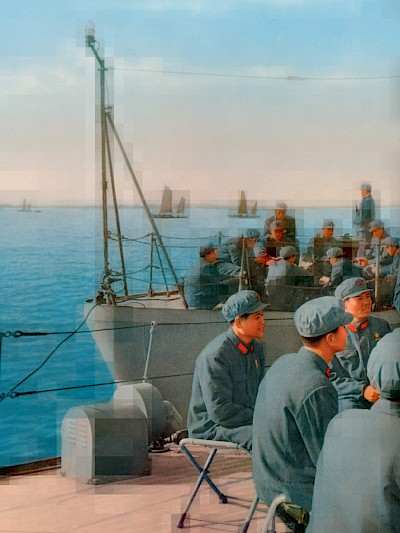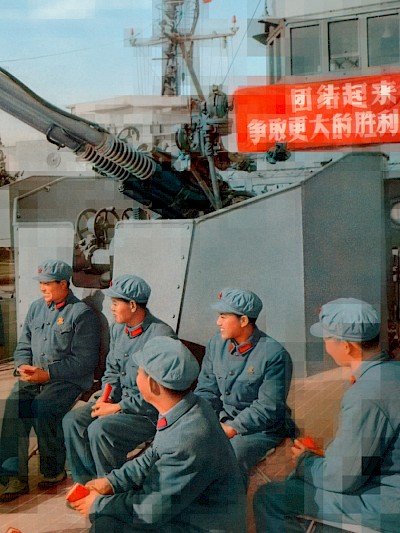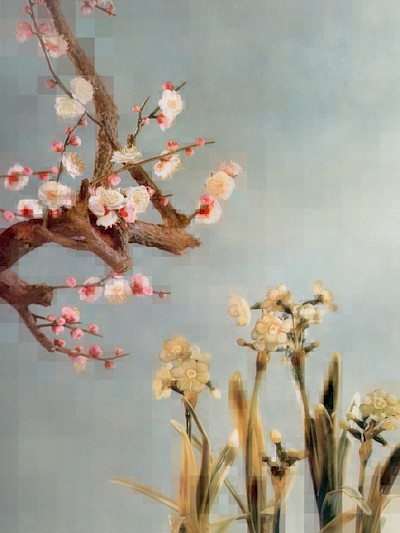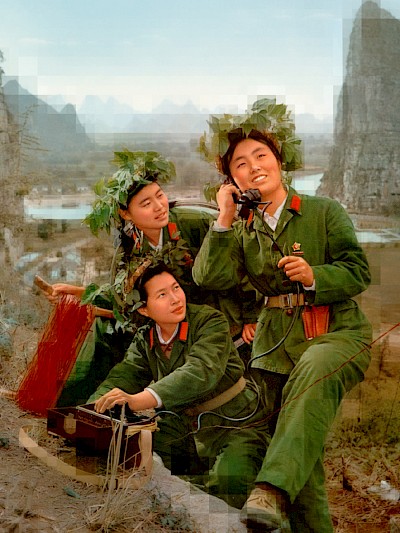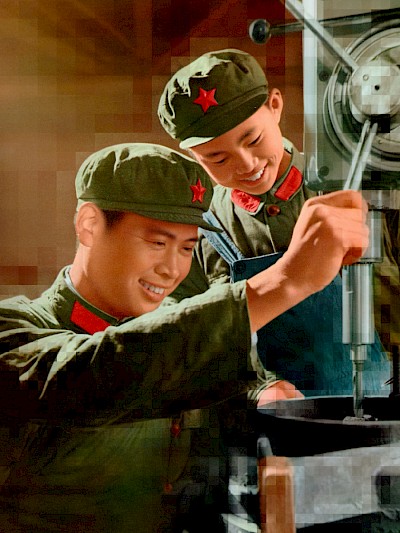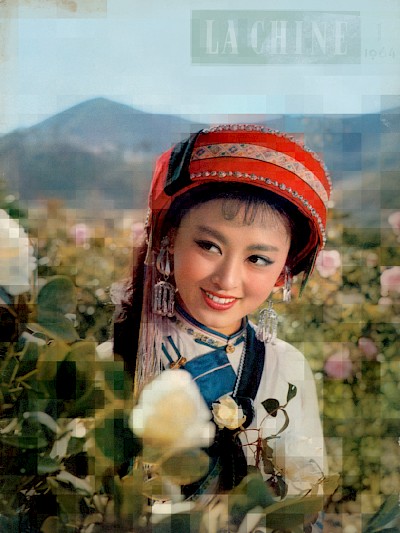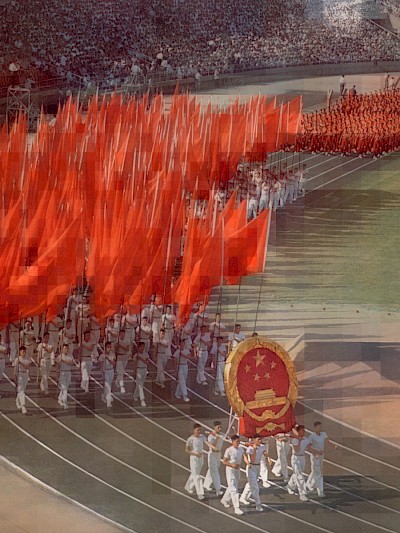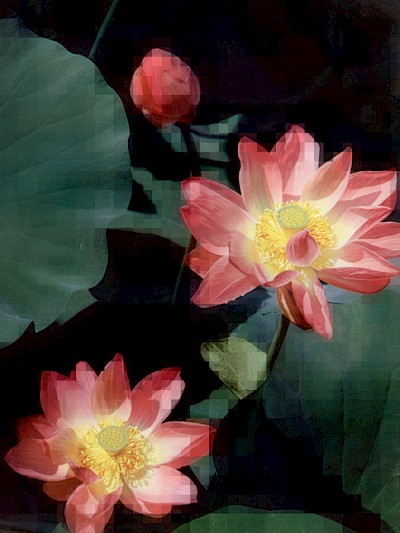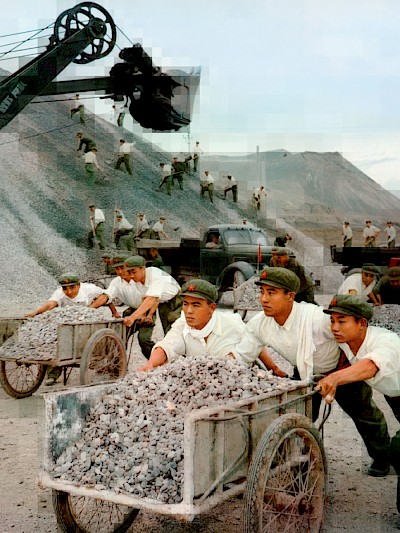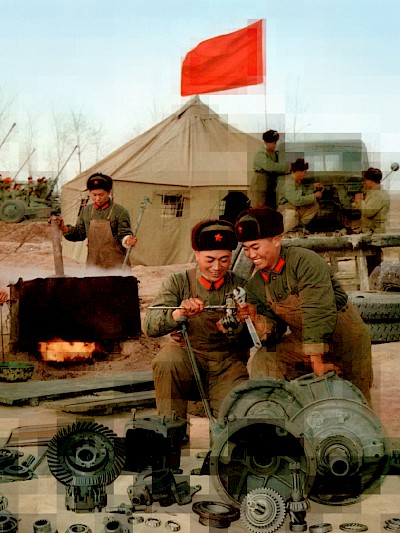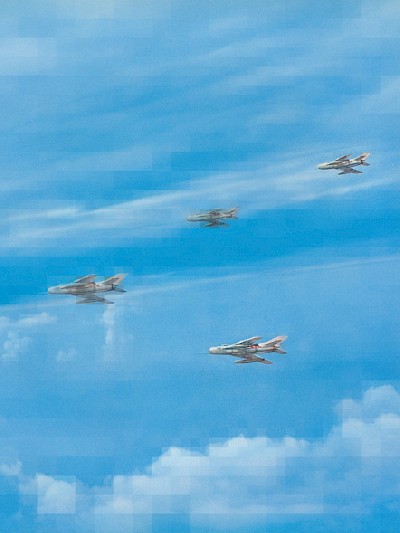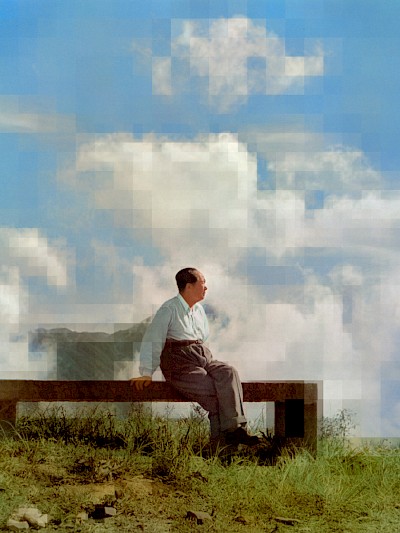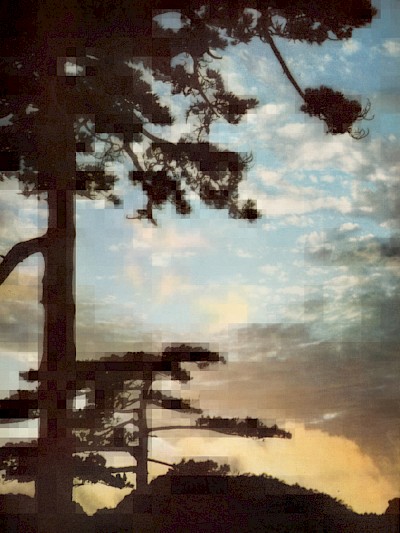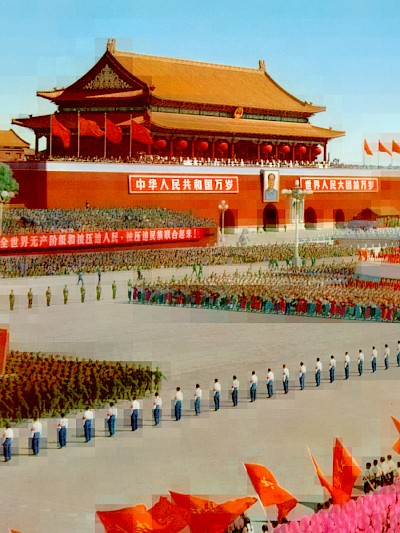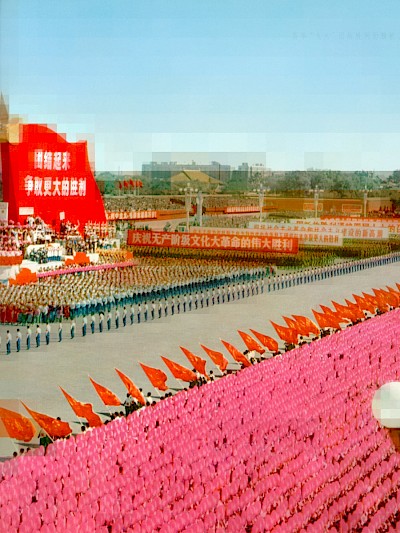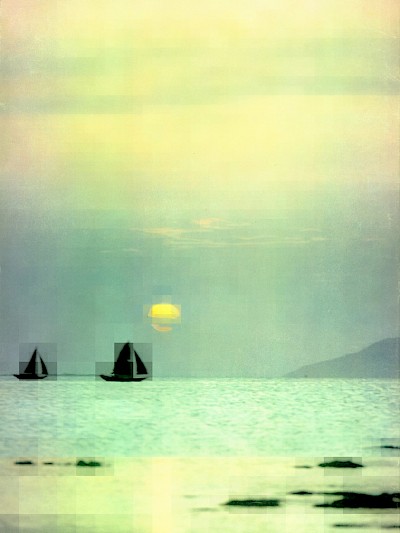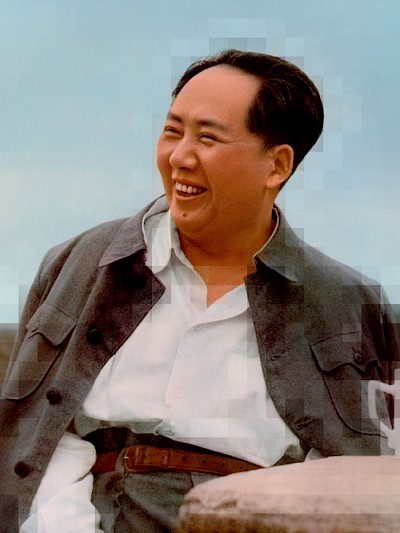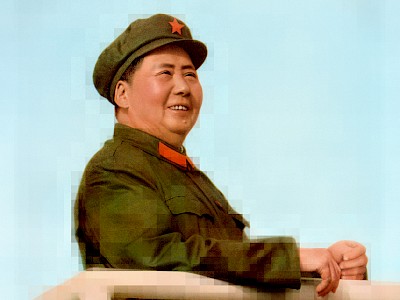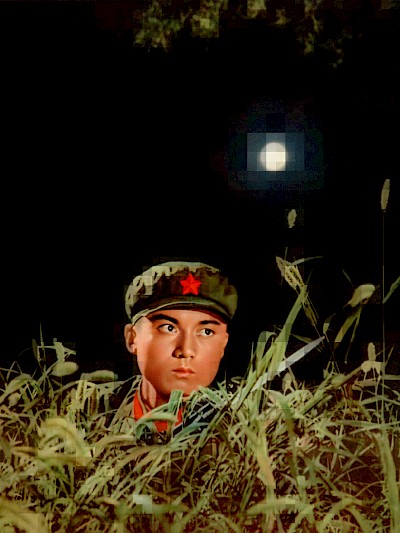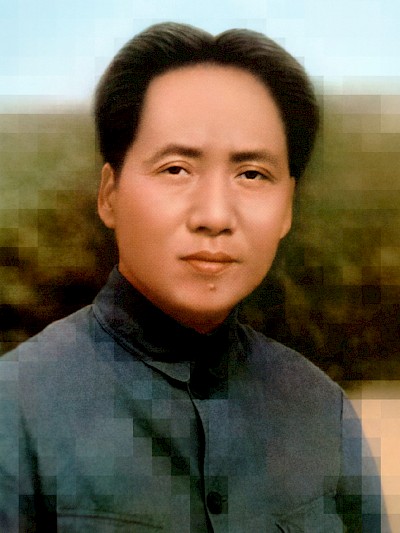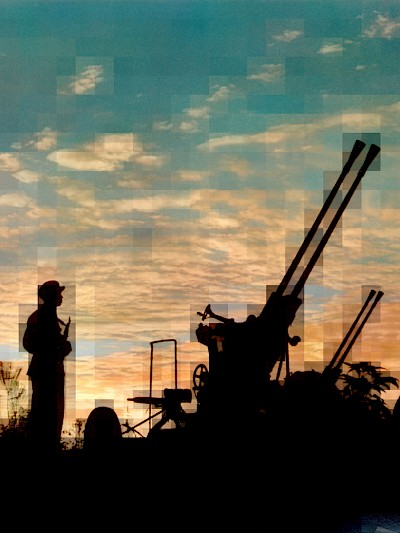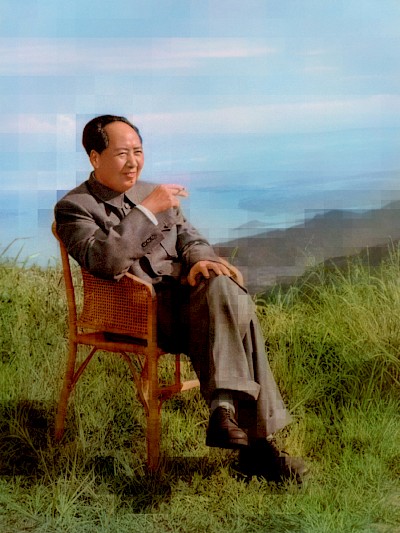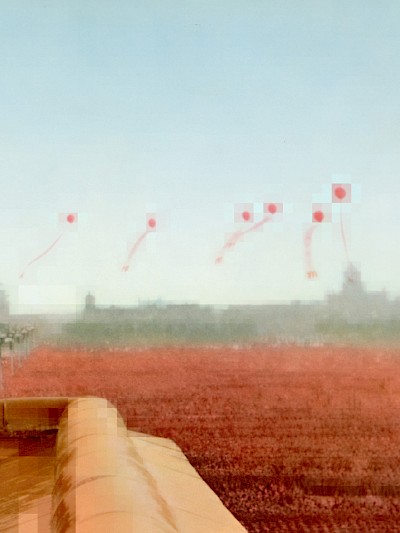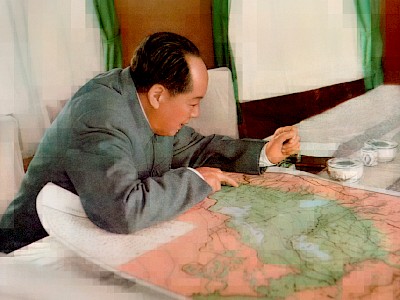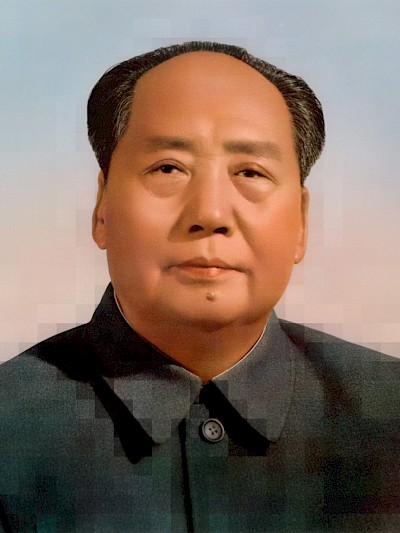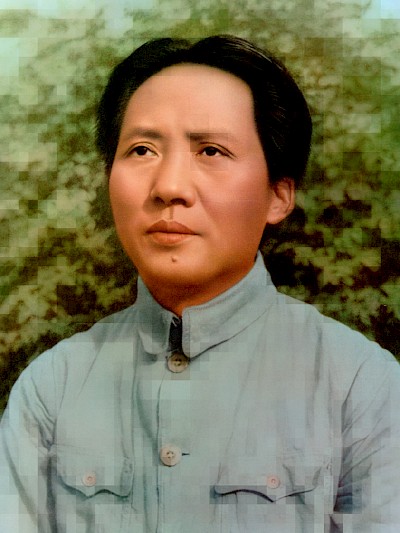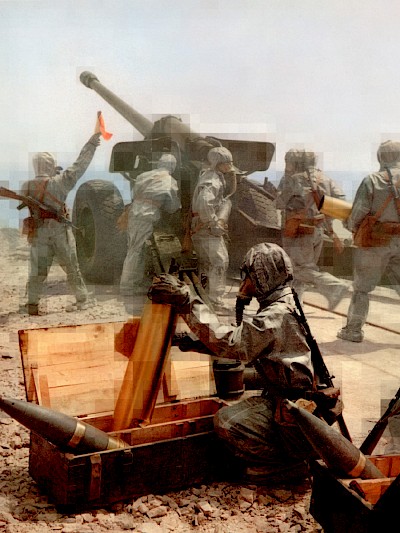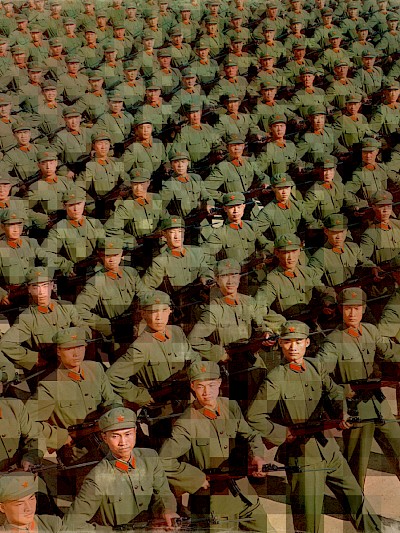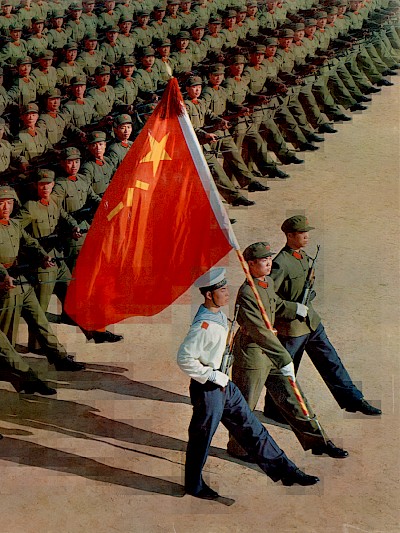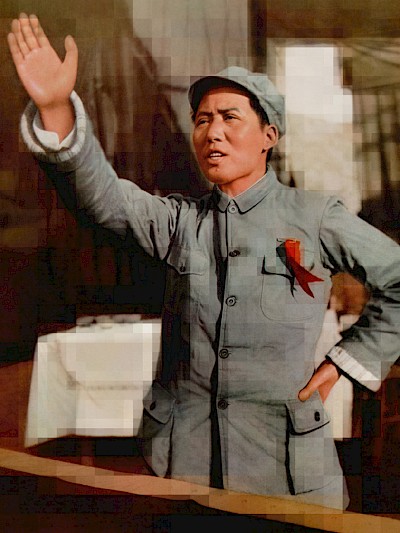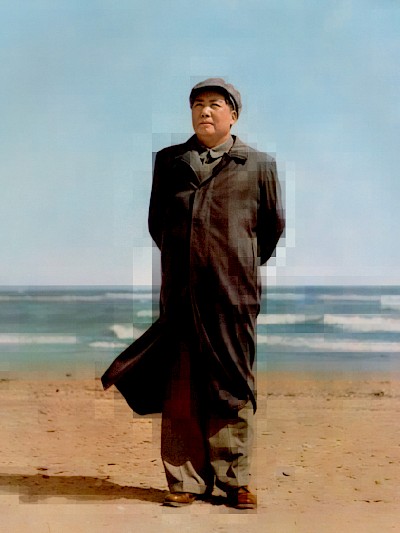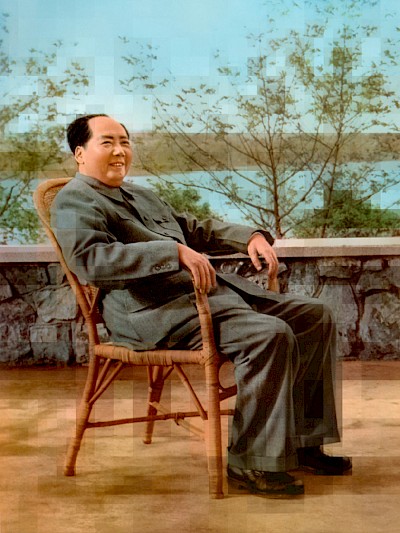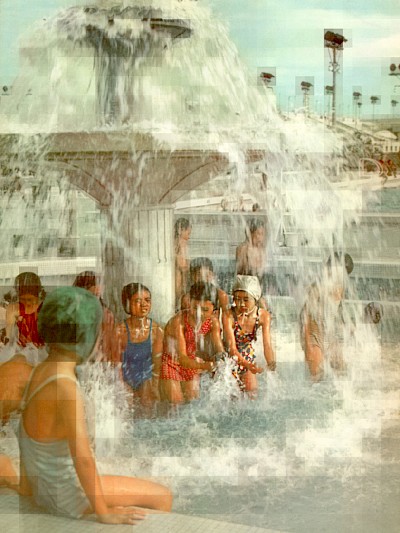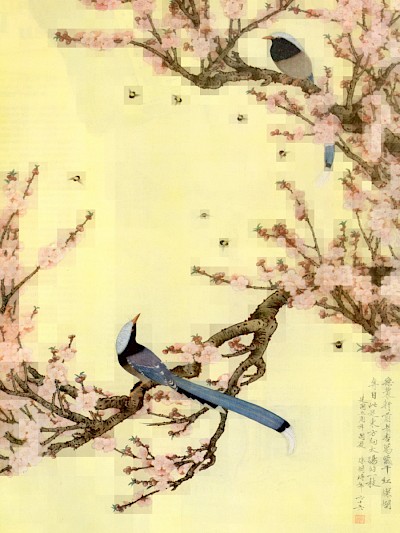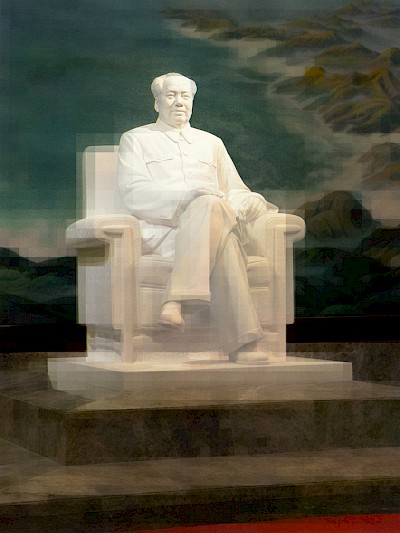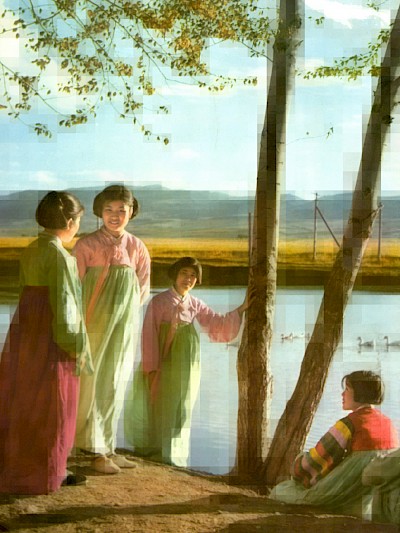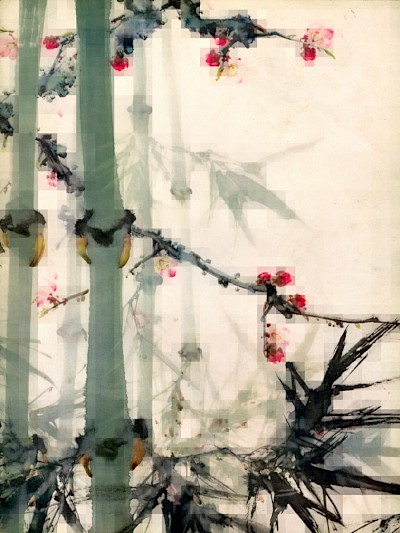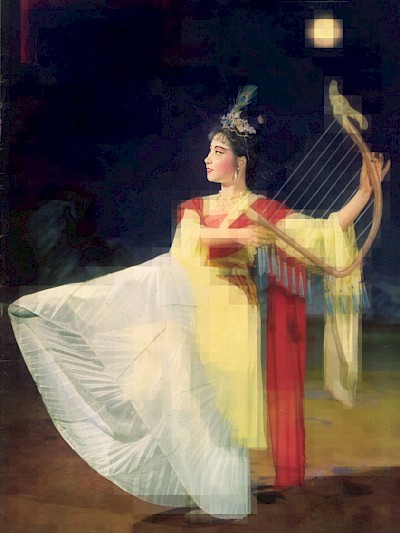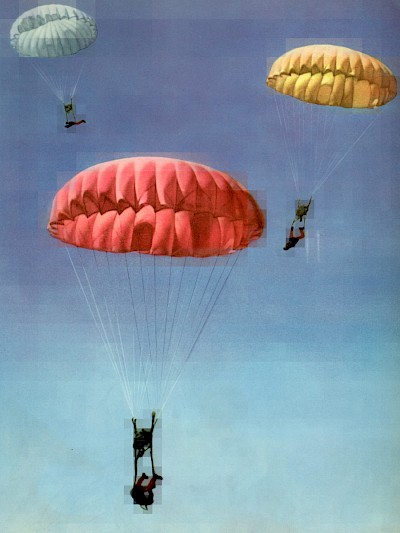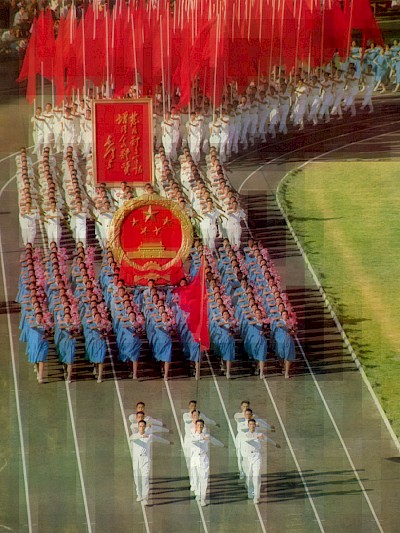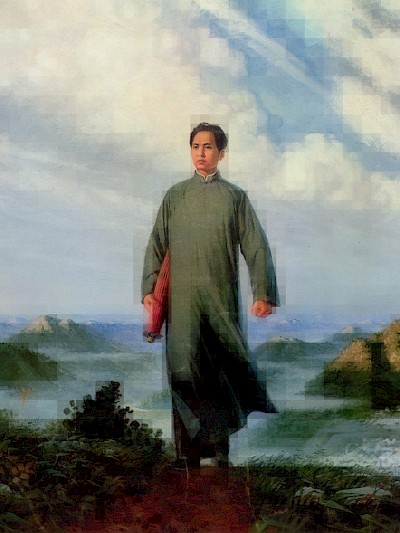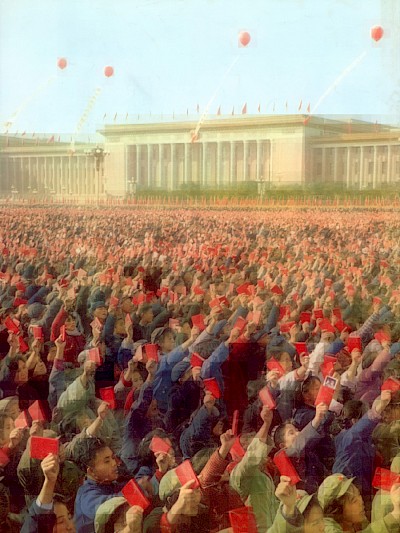Tableaux chinois
For many years, Thomas Ruff has been working with a subject that also has a firm place in photography: the propaganda image, which depicts an “idealized world.” For Tableaux chinois, the artist scanned images from books on Mao published in China, as well as from the magazine La Chine, published and distributed worldwide by the Chinese Communist Party. He stored them in such a way that the offset halftone was preserved. He then duplicated the images and converted the offset halftone of the duplicates into a large pixel structure. In the course of further work on the computer, he placed these new images, which were provided with a digital image structure, as a second and/or third layer over the original scan and then selectively removed parts of the second or third level. The resulting new image thus has both the halftone of the “analog” offset printing and the “digital” structure of the pixel image. The propaganda images of the twentieth century are thus transported into the visual language of the twenty-first century and unmasked as manipulative images.

Tableaux chinois
For many years, Thomas Ruff has been working with a subject that also has a firm place in photography: the propaganda image, which depicts an “idealized world.” For Tableaux chinois, the artist scanned images from books on Mao published in China, as well as from the magazine La Chine, published and distributed worldwide by the Chinese Communist Party. He stored them in such a way that the offset halftone was preserved. He then duplicated the images and converted the offset halftone of the duplicates into a large pixel structure. In the course of further work on the computer, he placed these new images, which were provided with a digital image structure, as a second and/or third layer over the original scan and then selectively removed parts of the second or third level. The resulting new image thus has both the halftone of the “analog” offset printing and the “digital” structure of the pixel image. The propaganda images of the twentieth century are thus transported into the visual language of the twenty-first century and unmasked as manipulative images.






